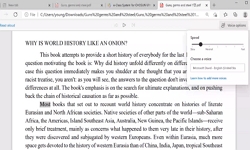<P><B>Abstract</B></P> <P>Friction stir spot welding of advanced high strength steel, like dual phase (DP) 980, is a very demanding application in terms of tool wear. The best candidate material currently being tested is...
http://chineseinput.net/에서 pinyin(병음)방식으로 중국어를 변환할 수 있습니다.
변환된 중국어를 복사하여 사용하시면 됩니다.
- 中文 을 입력하시려면 zhongwen을 입력하시고 space를누르시면됩니다.
- 北京 을 입력하시려면 beijing을 입력하시고 space를 누르시면 됩니다.


Effect of PCBN tool grade on joint strength and tool life in friction stir spot welded DP 980 steel
한글로보기https://www.riss.kr/link?id=A107477205
- 저자
- 발행기관
- 학술지명
- 권호사항
-
발행연도
2015
-
작성언어
-
- 주제어
-
등재정보
SCOPUS,SCIE
-
자료형태
학술저널
-
수록면
531-536(6쪽)
- 제공처
-
0
상세조회 -
0
다운로드
부가정보
다국어 초록 (Multilingual Abstract)
<P><B>Abstract</B></P> <P>Friction stir spot welding of advanced high strength steel, like dual phase (DP) 980, is a very demanding application in terms of tool wear. The best candidate material currently being tested is polycrystalline cubic boron nitride (PCBN). The purpose of the current work is to study the effect of PCBN material grade, as specified primarily by CBN grain size, on weld quality and tool life, for the spot welding of DP 980 steel. With a nominal composition of 90% CBN, three tool grades were tested. Grade A had CBN grain sizes of 3–6μm, grade B had grain sizes of 12–15μm, and grade C had a multimodal distribution, with grain sizes ranging from 4 to 40μm. The best performance in terms of joint strength and tool life was achieved with grade A. The effect of fine CBN grain size was less adhesion of DP 980 on the tool surface over time, less abrasive wear, and higher lap shear failure loads of the welds that were produced, compared to the other grades. A-type tools were the most consistent in both the number of welds per tool, and the number of welds that reached acceptable lap shear failure loads. B-type tools, performed slightly better than C-type tools in terms of wear, but neither of them was able to achieve consistent, acceptable lap shear failure load values after the first 200 welds. In fact only one out of five C-type tools was able to produce acceptable lap shear failure loads after the first 100 welds. Based on the experimental evidence, tool wear was likely dominated by grain pullout. This is consistent with the correlation showing that larger CBN grain size was related to shorter tool life.</P> <P><B>Highlights</B></P> <P> <UL> <LI> We monitored wear resistance of PCBN tools over thousands of friction stir spot welds in DP 980 steel. </LI> <LI> CBN grain size was found to have a significant impact on tool life and on joint strength. </LI> <LI> Grain pullout was postulated to be the primary wear mechanism based on the evidence. </LI> </UL> </P>




 ScienceON
ScienceON






